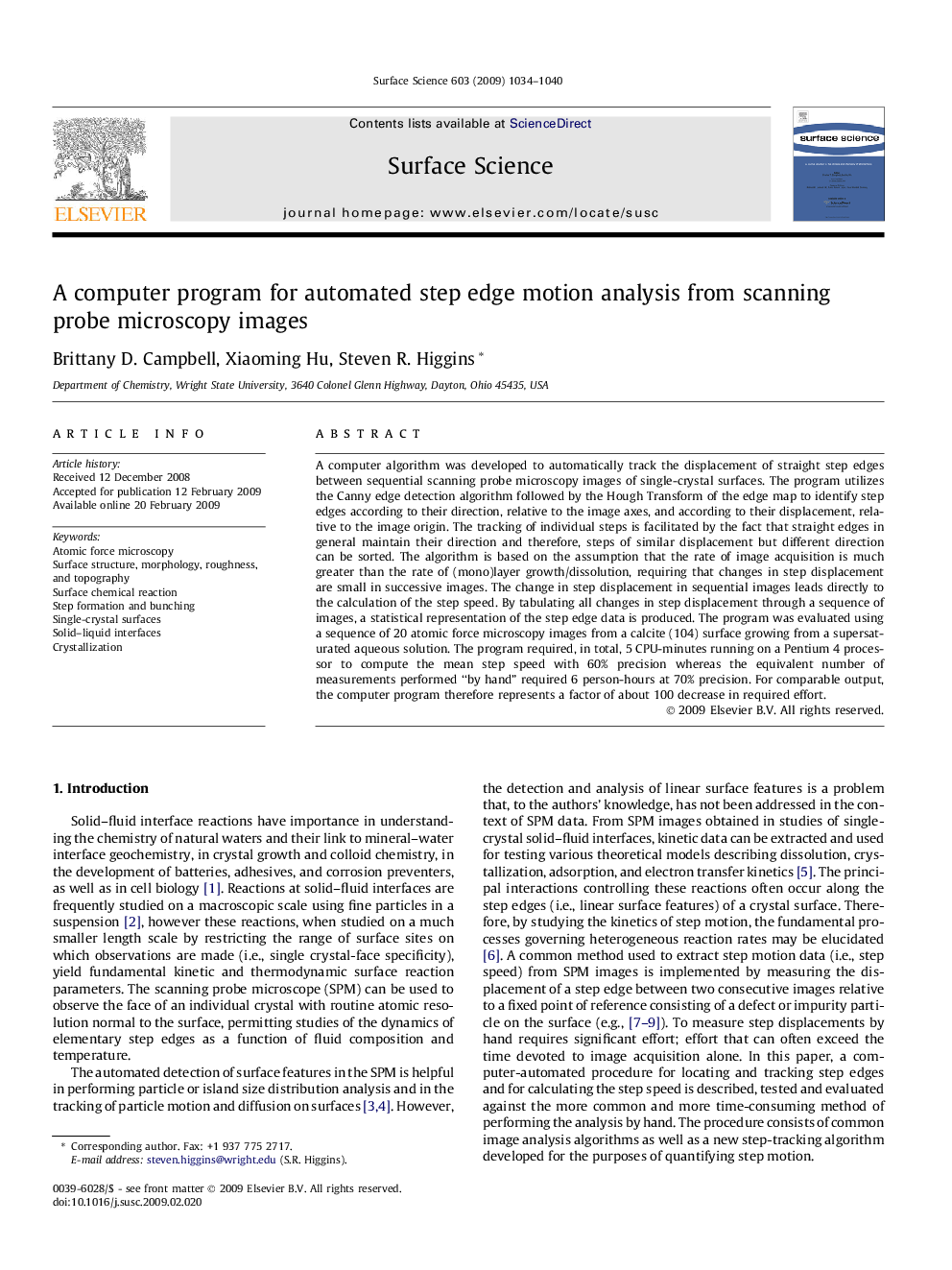| Article ID | Journal | Published Year | Pages | File Type |
|---|---|---|---|---|
| 5423927 | Surface Science | 2009 | 7 Pages |
Abstract
A computer algorithm was developed to automatically track the displacement of straight step edges between sequential scanning probe microscopy images of single-crystal surfaces. The program utilizes the Canny edge detection algorithm followed by the Hough Transform of the edge map to identify step edges according to their direction, relative to the image axes, and according to their displacement, relative to the image origin. The tracking of individual steps is facilitated by the fact that straight edges in general maintain their direction and therefore, steps of similar displacement but different direction can be sorted. The algorithm is based on the assumption that the rate of image acquisition is much greater than the rate of (mono)layer growth/dissolution, requiring that changes in step displacement are small in successive images. The change in step displacement in sequential images leads directly to the calculation of the step speed. By tabulating all changes in step displacement through a sequence of images, a statistical representation of the step edge data is produced. The program was evaluated using a sequence of 20 atomic force microscopy images from a calcite (104) surface growing from a supersaturated aqueous solution. The program required, in total, 5 CPU-minutes running on a Pentium 4 processor to compute the mean step speed with 60% precision whereas the equivalent number of measurements performed “by hand” required 6 person-hours at 70% precision. For comparable output, the computer program therefore represents a factor of about 100 decrease in required effort.
Keywords
Related Topics
Physical Sciences and Engineering
Chemistry
Physical and Theoretical Chemistry
Authors
Brittany D. Campbell, Xiaoming Hu, Steven R. Higgins,
